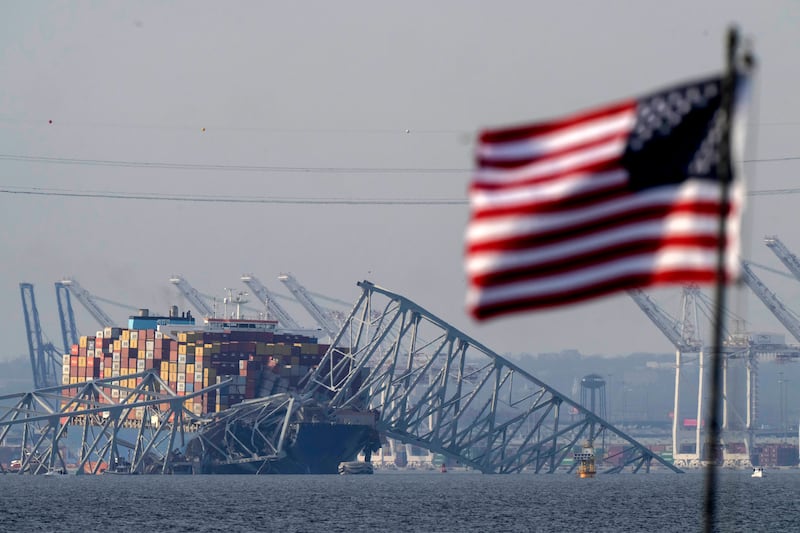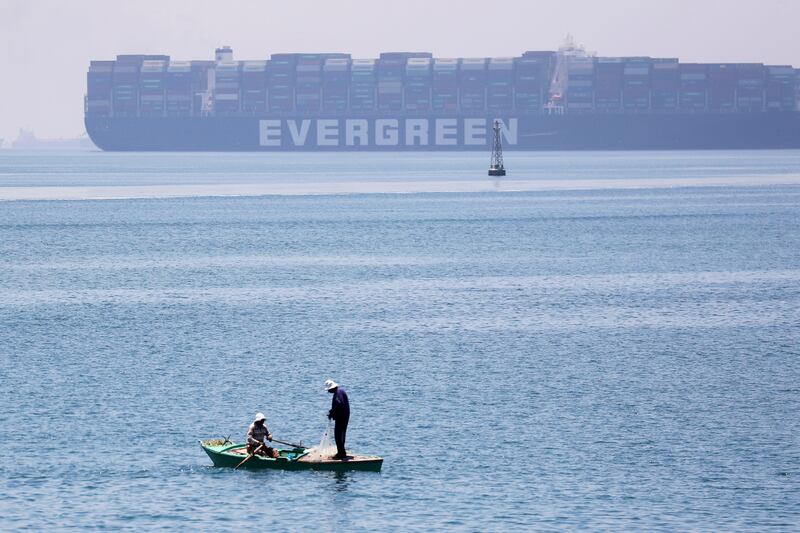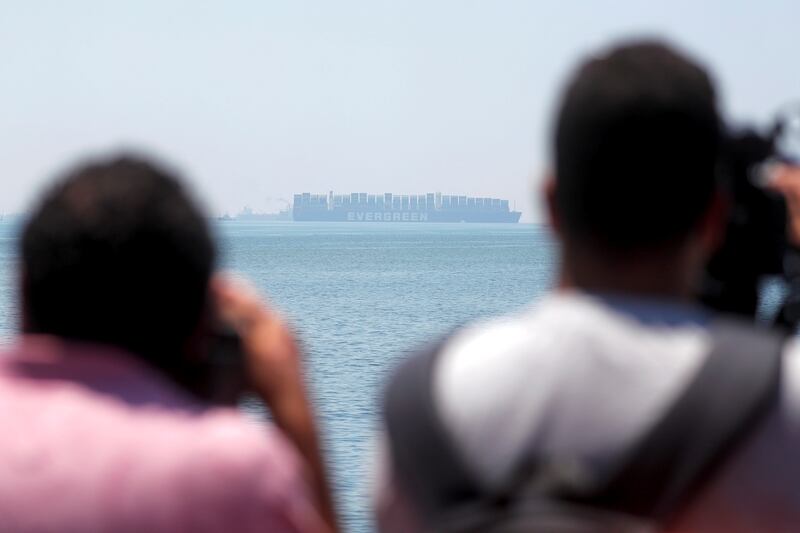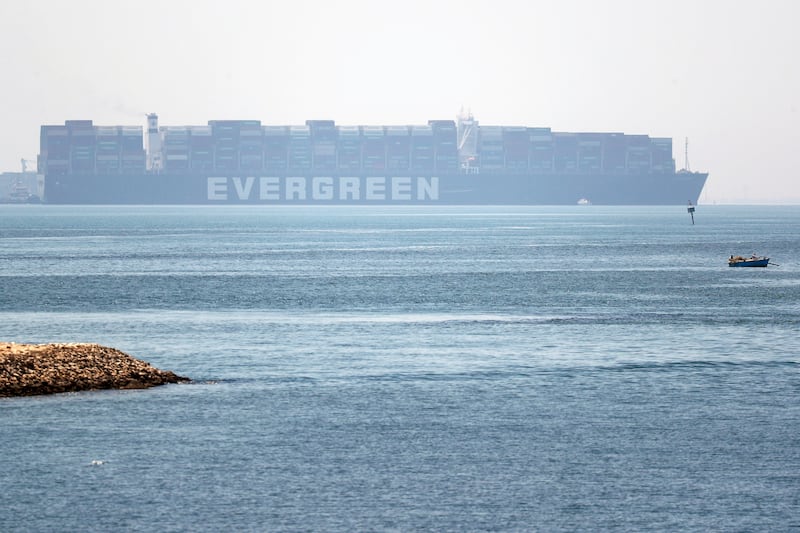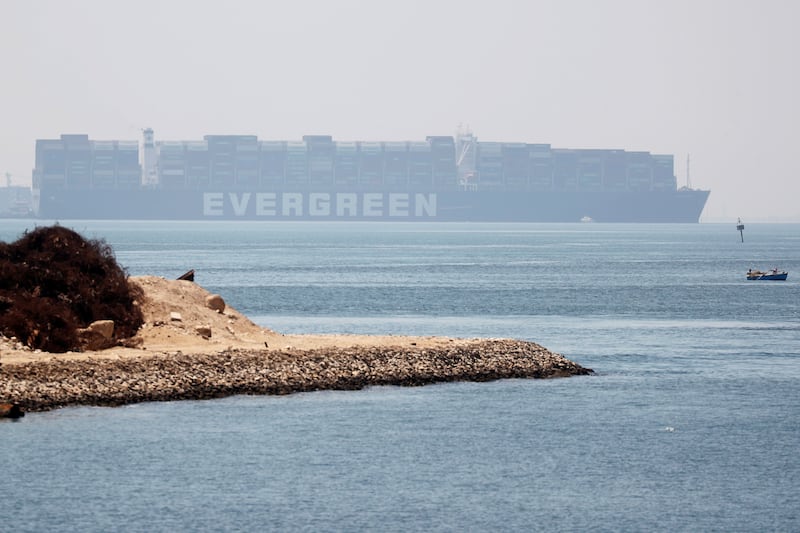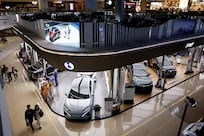For a global transport network that carries 90 per cent of the world’s traded goods, international shipping is – surprisingly – somewhat out of sight, out of mind. Most people go about their daily lives oblivious to the thousands of ships that carry millions of containers across oceans and seas, 24 hours a day, seven days a week. It is only when this carefully calibrated supply chain breaks down that most people truly appreciate just how essential shipping is.
When the Singapore-flagged container vessel Dali hit a major bridge in the eastern US city of Baltimore, Maryland, on Tuesday, the world sat up and took notice. The moment of the Francis Scott Key Bridge’s collapse was caught on camera and endlessly replayed. In addition to the tragic loss of six people who were carrying out maintenance work on the bridge when it came down, the crash looks set have a cascade effect on jobs, businesses, trade and transport not just in the US north-east, but internationally.
Countries in the Middle East, home to some of the most strategic waterways in the world, are acutely aware of what can happen when shipping runs aground. Almost exactly three years ago, the Panama-flagged vessel Ever Given, operated by Evergreen Marine Corp, blocked Egypt’s Suez Canal for nearly a week. The enormous cargo ship was released in a difficult salvage operation but not before costing the world billions in lost trade. Elsewhere in the region, the continuing disruption in the Red Sea caused by Houthi attacks on international shipping is not just costing companies millions in expensive rerouting and higher insurance costs, it is also hurting the flow of humanitarian aid to war-torn Sudan.
Major accidents in shipping are relatively rare; according to a 2023 report from German insurers Allianz, 38 large ships were lost worldwide last year, down by more than a third year-on-year and the lowest total in the report’s history. But when things go wrong, the environment is often the first to suffer and the last to be put right. In May 2020, the MV X-Press Pearl container ship caught fire and sank off the coast of Sri Lanka, releasing chemical pollution that became the country’s worst ecological disaster. In January 2007, the MSC Napoli suffered catastrophic hull damage in the English Channel; the salvage operation took a colossal 924 days to complete.
Given the serious consequences of collision or fire at sea, how can shipping’s reputation for safety be improved? Plenty of ideas are in the mix. According to maritime software manufacturer BASSnet, advanced digital systems can ensure that vessels comply with shipping’s seven main international safety codes, and offer systematic and detailed records of audits, inspections and risk assessments. Best-in-class technology can also automate navigation and route planning, reducing risks and allowing seafarers to concentrate on other tasks.
Technology offers myriad ways to make shipping safer, but it is the world’s 1.9 million seafarers that must take centre stage in a culture of competence and accountability. For that to happen, crews’ mental and physical health must take priority; this can be done by improving ways of tracking work and rest hours to prevent fatigue from setting in.
Creating a safety culture that reaches from the boardroom to the engine room is essential. This was recently highlighted in another indispensable transport network – aviation. This week, Tim Clark, the president of Emirates Airlines, told The National that under-fire aircraft manufacturer Boeing needed to establish a governance model that prioritises safety and quality.
Accidents will happen and Baltimores is not an isolated incident; last month a container vessel rammed a bridge in Guangzhou, China, killing two people. But given shipping’s central place in both national and international economies, the margin for error is small. This is why Baltimore should sound an alarm for the industry as a whole to build on the progress it has already made.
